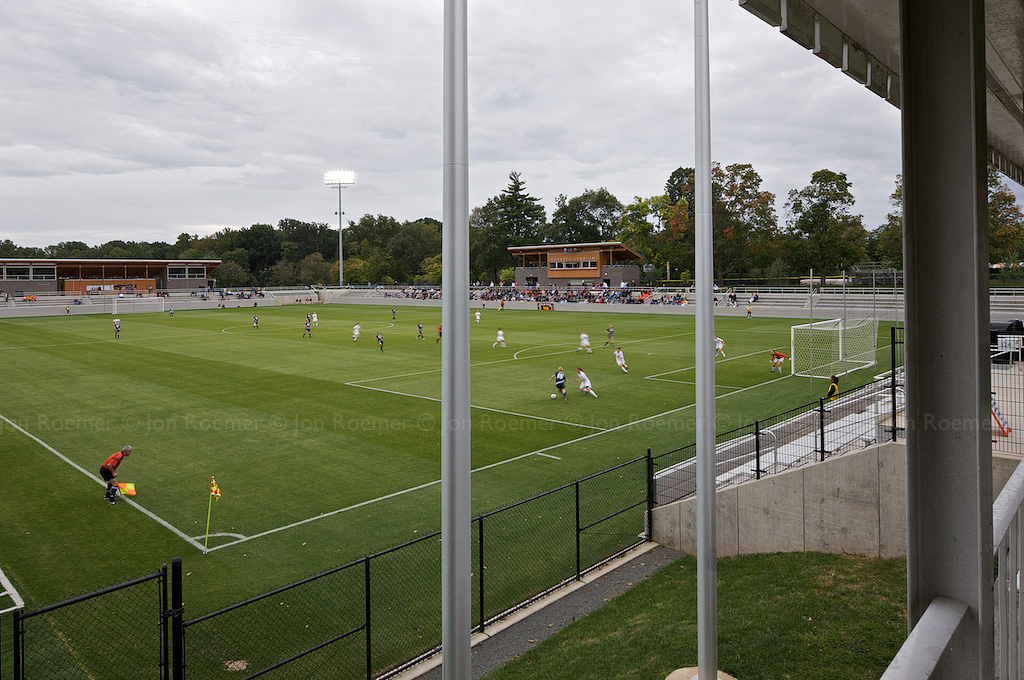
I have posted reports on both of Canon’s new TS-E lenses (aka tilt/shift), the 17mm f/4L and the 24mm f/3.5L II, and I have been using them full on since receiving them earlier this year. They’re great optics. It’s clear how much of an improvement they are and how much they stand out the first time you use them.
Now, architectural photographer Rainer Viertlböck has posted two tests comparing them with his medium-format digital back, a 33mp Sinar e75, coupled with Rodenstock’s high-end view camera lenses; the 23HR, 28HR, and 35HR. Rainer used the Canon lenses on a Canon 5D Mark II.
Canon 17mm TS-E F/4L compared to Rodenstock 23HR + Sinar e75
Canon 24mm TS-E f/3.5L II compared to Rodenstock 28HR & 35HR + Sinar e75
Many are in agreement about how great these new Canon lenses are but I don’t know that anyone, myself included, expected them to compare so favorably against a medium-format digital back when used with view camera lenses. In the 17mm TS-E test, the Canon doesn’t have quite the detail or resolution of the medium-format kit but it comes awful close. This holds true even when the Canon files are res’d. up to match the Sinar e75 resolution.
In the 24mm TS-E II test, the Canon does a much better job than the Sinar/Rodenstock combo in controlling flare from tungsten light sources.
Every digital kit is a compromise of sorts. With a DSLR you have flexibility but loose in sharpness; with a medium-format digital back you gain in sharpness and resolution, but are more limited in workflow, operability, and the cost of entry is orders of magnitude higher.
It used to be that one of the main factors in digital architectural photography tipping the scales toward medium-format digital backs was the ability to use view camera lenses. This combo offered a photographer image quality which a DSLR with SLR style lenses could never attain. Well, never is broken and that compromise is looking less like a compromise and more like a choice based on style and needs.
—
My Canon 17mm TS-E and 24mm TS-E II posts:
- Quick Look – Canon 17mm f/4L TS-E Lens
- Longer Look – Canon 17mm f/4L TS-E Lens
- Live View is My Friend (features the Canon 17mm TS-E lens)
- Canon’s TS-E 24mm f/3.5L II Lens
- What’s It Take to Fill a Space and Make It Your Own? (features the Canon 17mm TS-E lens)
quisiera saber su opinion entre phase one vs canon 5d mark II
For me, shooting a mix of people and place, the 1DsM3 fits the bill. It was always fine for my people work. I did wonder, with my architecture work, if I’d be better off using a Phase One back + view camera lenses but I never made the jump.
The 1DsM3 has had enough resolution for my needs and my clients’ needs. That said, I am always driven to give my clients the very best that I can artistically and technically. Now, when shooting architecture using the new tilt/shift lenses, it’s comforting to know it’s not a compromise. That’s not to say there aren’t differences between a DSLR and a medium format digital back, there are. But I think that these new lenses, used on a 1DsM3 or a 5DM2, even the playing field quite a bit. They make the choice less about technical issues and more about other issues – your personal shooting style, subject matter, ease of use (gear & software), on location workflow, post-processing/post-production needs, your clients’ needs & budgets, ability to have a backup kit on site, etc.
I think if you follow the links above to Rainer’s findings you can extrapolate from there. It has direct tests between a 5DM2 and a Sinar back. The Sinar back would be similar to any Phase back with a similar sized chip in it (33mp.) The difference would be greater if the chip is higher res., like with a P65, or less if the chip is of lower res. Beyond that you would need to factor in the things I just mentioned (and ideally rent each setup to really know for sure.)